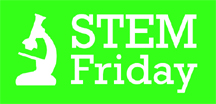
I recently read Sandra Steingraber’s essay “The Big Talk (and Systems Theory),”(I read this in her book Raising Elijah, but you can read a version of the essay here). In it she ponders how to discuss global warming with her children. She avoids the topic for a while, but the more she hears her elementary-aged kids offhandedly discussing global warming, she knows she has to bite the bullet and clarify a few things. For help, she turns to the up-and-coming literary genre of global warming children’s books, where she figures out… not much.
Since reading her essay, I too have been wondering what my eight-year-old son knows about global warming. Does it scare him? Does he feel pressured to help solve the problem? Is he worried? These were things I didn’t know. And like Ms. Steingraber, I didn’t know how I should discuss the topic with him.
Global warming is a very adult topic, yet, it is our children who will have to suffer the consequences of our actions, or in this case, inaction. It is hard to admit that we adults have done something so terribly wrong that might alter the biggest thing part our existence—our planet. Many people still deny that global warming is real, and I can only imagine it is this fear of admitting wrongdoing that blinds them from the truth. However, as we begin to admit we've made some mistakes, how do we teach our kids about those mistakes, explain what is happening to the earth, and not worry them about their future in the process?
For guidance, I followed Ms. Steingraber’s footsteps and went to the place that can always provide answers—the library.
Global Warming, by Seymour Simon, was published in 2010 by the Smithsonian and Harper Collins. The book starts off with some fairly good information about climate and weather, greenhouse gasses, and the idea that though the earth is a very complex system, humans are indeed altering the climate. The book also clearly states that “No one person causes global warming.” A sentiment I appreciate, because part of talking to kids about this is making sure they understand, without feeling guilty about it.
But then Global Warming takes a turn, and we read page after page of the negative things that are happening or may happen because of climate change: polar bears losing their hunting grounds; glaciers melting and raising the sea level causing cities to become underwater; and destruction of coral reefs. The more I read, the more scared I became. Each page is accompanied by friendly Smithsonian-style photographs, and the final few pages offer actions that families can take to do their part in reducing carbon emissions, which is helpful. Overall, however, the presentation of the difficult truth is too hard for the pictures to soften.

Unfulfilled, I turned to Buried Sunlight: How Fossil Fuels Have Changed the Earth, by Molly Bang and Penny Chrisholm, illustrated by Molly Bang. This book was published in October 2014 by The Blue Sky Press. First thing I noticed was the paper. It felt amazing between my fingers. I flipped to the back to discover that it is 55% recycled content and 25% post-consumer waste. Not sure exactly what that adds up to, but I sure did like the feel of the book.
Buried Sunlight is beautiful. The illustrations are stunning—they reminded me of aboriginal art. The book goes through a very concise and easy-to-understand explanation of what fossil fuels are, the million years it took to create those carbon chains, and how humans came along to dig up that energy.
Buried Sunlight also notes the bad things that are happening or may happen due to global warming, but the distressing things are covered in TWO pages; a much more manageable amount.
While I was reading, the book had me; it is scientifically accurate, realistic yet hopeful, and written in a way that lacked threats and guilt. Until the end. The last page put the question to the reader—will you keep burning fossil fuels? Or will you find better ways to get energy? And… they lost me.
You can pose such a question to an adult who has the opportunity to make effective choices. But you can’t do that to a child. Particularly without offering them some options, like at least the Smithsonian did—walk to school, unplug lights you aren't using, take short showers. Of course kids want to help, but this is exactly the pressure I don’t want to put on my child. I am not going to lay a terrible reality on him, then jump in his face and loudly say, what are YOU gonna do about it, kid?
After reading these two books I went back to Ms. Steingraber. She wrote this, “The way we protect our kids from terrible knowledge is not to hide the terrible knowledge, or change the subject, or even create an age-appropriate story about the terrible knowledge, but to let them watch us rise up in the face of terrible knowledge and do something.”
This past fall my son and I planted a few more trees in our scrubby and scraggly yard. As we turned over the cold, dark earth, I asked him if he knew about global warming. “Yeah, I do,” he told me matter-of-factly.
“Are you worried about it, or scared?” I asked.
“No, not really.”
“Because, you know, it is a big deal, and we can talk about it if you want. People are working on the problem and we are trying to figure out how to do things better,” I rambled. “And I am doing everything I can to change things, to make it better. Like now, planting trees with you.”
“I know, Mom,” he said. “I understand. It’s ok."
I looked at him. My son, my future, our future. Then I leaned in and dug my hands deep into the dirt with his.

It's
STEM Friday! (Science, Technology, Engineering and Math)



 It's
It's
Comments